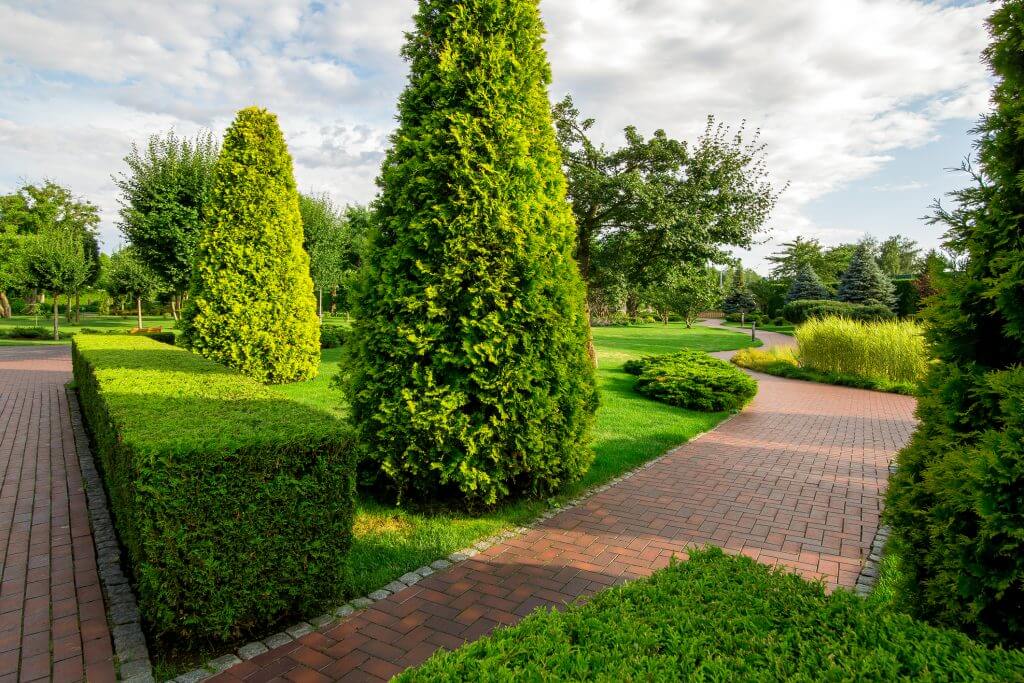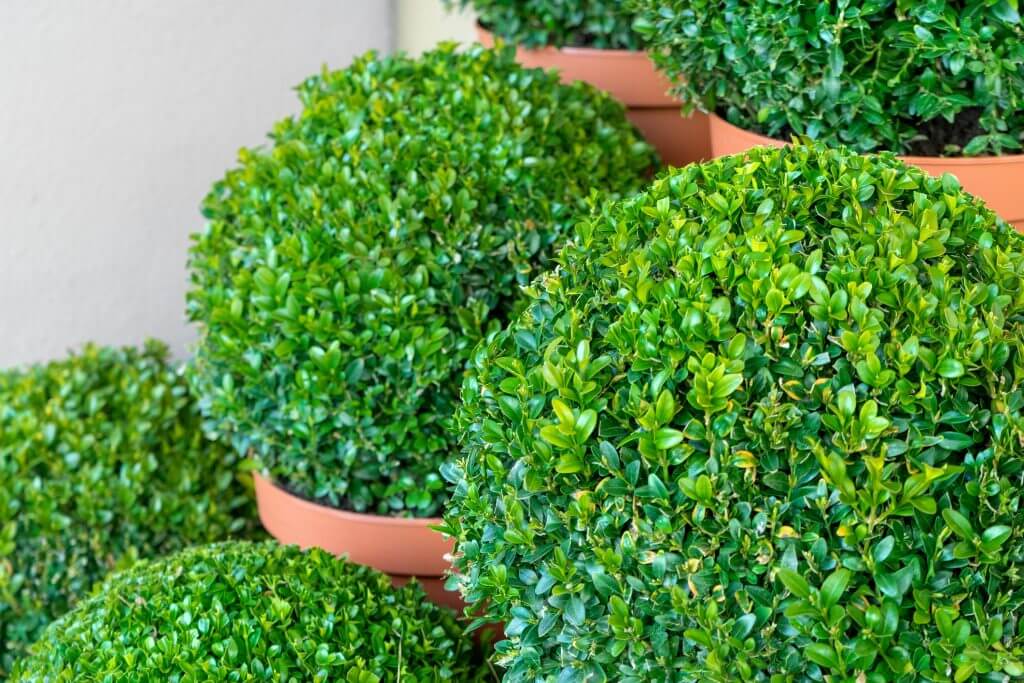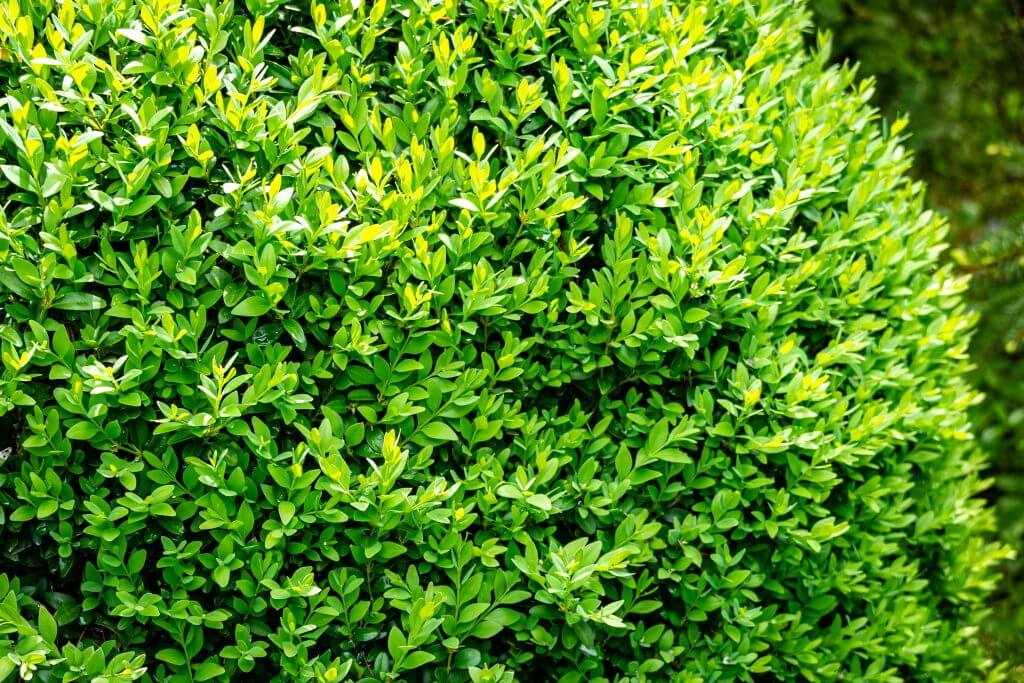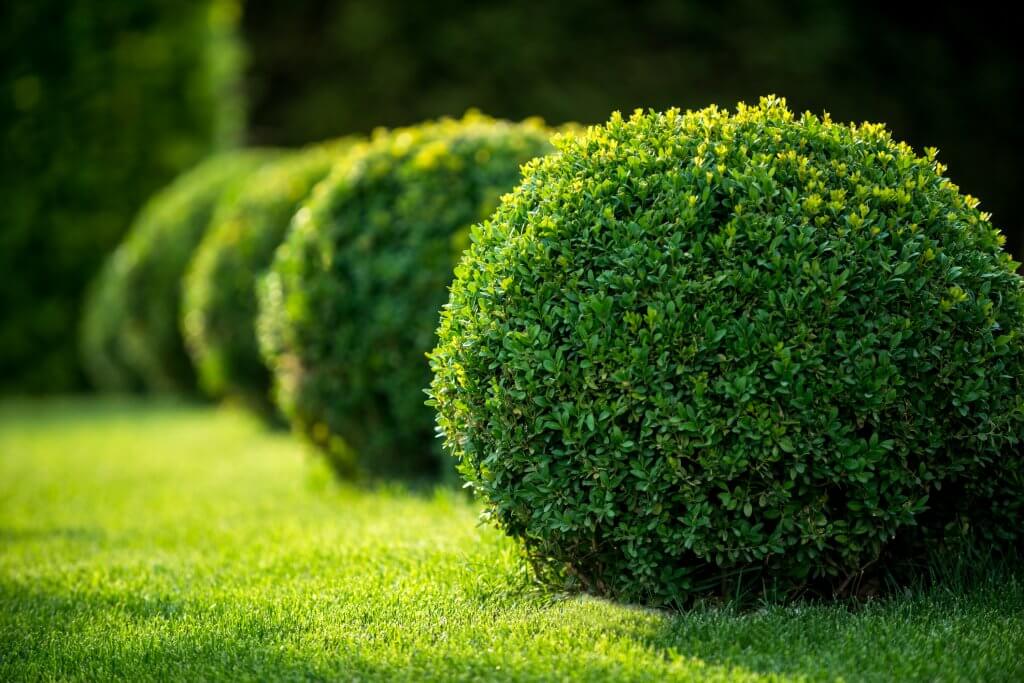Looking to frame your garden with the right plant? We recommend planting Buxus in your garden. Buxus plants are popular to grow in gardens because they are usually slow-growing, except for a few types, and low maintenance. They are suitable to be planted in most types of soil, except for waterlogged soil. Another bonus is that these plants, once established, are drought tolerant.
They come in various shapes (e.g. round, columnar, oval) and sizes, and normally have small, glossy, dark green leaves. With the right conditions, they are long-lasting and can live 20-30 years.

How to Select The Right Buxus For Your Garden
This would depend on the purpose of the Buxus. Slower-growing Buxus is normally used for edging garden or landscape beds, while the faster-and upright-growing Buxus is used for borders, foundation plants, or as accent plants. Here are a few types of Buxus plants to give you some ideas of what you can plant in your garden.


Dwarf/Low-growing Buxus:
Sprinter. (Figure 1). This is a type of Japanese boxwood, native to Japan and Taiwan. The sprinter grows fast and is low-maintenance. It is resistant to the boxwood blight fungus and winter burn. On average, the sprinter is about 2 to 4 feet tall and wide.
North Star. North stars are dense, and have a globe-like form. They have a good color even during the winter, and are resistant to the boxwood blight fungus. Usually, the north star is about 2.5 feet tall and wide.
Wedding Ring. (Figure 2).Wedding rings have glossy leaves that exhibit patches of different colors. The leaves are lime in edges and turn golden in the summer. These are good as a low hedge or container plant and can grow from 1 to 3 feet tall and wide.
Nana. Nanas have a low-spreading form. It has a lime green color that fades to light green. This plant is resistant to both the boxwood blight fungus and leaf miners. Normally, nanas grow to 2 feet tall, and 3 feet wide.


Cold/Hardy Buxus
Green velvet. (Figure 3).The green velvet grows rounded, even without pruning and is good if you want dense, low hedges. These are susceptible to leaf miners, however. Green velvets usually grow from 3 to 4 feet tall and wide.
Green mountain. Green mountains are bright green in color and retains this color all year round. It is cone-shaped, and is good to use as an accent or for topiaries. It grows to 5 feet tall, and 3 feet wide.
Green gem. The green gem is a slow-growing type of Buxus. It has emerald-green foliage which turns bronze in the winter. This type of Buxus is good for foundation planting or for an informal hedge. It grows to about 3 to 4 feet tall and wide.
Glencoe. The Glencoe stays green all year round and grows to an oval shape. It is more susceptible to boxwood blight and grows to about 3 to 4 feet tall and wide.


Upright Buxus:
Fastigiata. (Figure 4). The fastigiata grows conically upright, has a slightly broader base, and has bluish-green foliage. It is good as a hedge plant and is somewhat resistant to boxwood blight. It grows to 6 feet tall and 2 feet wide.
Graham Blandy. Graham Blandys are dense and have a columnar growth. It is good for specimen planting and is resistant to boxwood blight. It grows to 6 to 9 feet tall, and 2 to 4 feet wide.
Dee Runk. Dee Runks grow fast and upright in a narrow, conical form. It is good as a hedge or accent and grows to 8 feet tall, and 2 feet wide.
John Baldwin. John Baldwins are cone-shaped with round bottoms. It has bluish foliage and is good to use as a hedge or for topiary. It grows to 4 feet tall, and 3 feet wide.
Rounded/Sphere-shaped Buxus:
Winter Gem. The winter gem grows fast but is easy to shear. It is good as a hedge and is resistant to boxwood blight. It grows to 4 to 6 feet tall and wide.
Golden Dream. The golden dream has lime-colored foliage and grows to about 3 feet tall and wide.
Green Beauty. The green beauty maintains its dark green foliage all year round and grows best in hot and humid places. This type of Buxus can stand drought better compared to other types and grows about 4 to 6 feet tall and wide.
Green Mound. (Figure 5). The green mound has a round shape and is good for hedges, foundation plantings, and containers. It grows to about 3 feet tall and wide.


HOW TO GROW AND CARE FOR YOUR BUXUS
To determine how many hedges you need, take the average width of the Buxus indicated in the descriptions above and divide it with the area you want to be covered. You should also leave a space of about eight inches between each hedge to give it enough room to breathe. Just like us, social distancing is also important for plants. To help keep your Buxus disease-free, air circulation is important.
When planting the Buxus, prepare the soil and make sure it’s crumbly. For bare-root Buxus hedges, plant it in its new spot as deep in the ground before it was dug up.
Water the hedges well, especially during the first summer after planting. Once the hedges are established, they can withstand drought, though you may notice their leaves turn a bit coppery in color. They will turn back to green once enough water and nutrients are available. While they can withstand drought, it is important to irrigate during these periods to ensure your plants are healthy.
Buxus plants grow, on average, about 3 to 6 inches each year. Initially, trimming should be done sparingly, and only once they’ve reached their desired height. Also, the area your Buxus is planted in needs to be well-drained and in partial shade, for it to thrive. The area about three feet from the Buxus hedge should be mulched to reduce water evaporation from the soil.
Pruning should be done about once a year and should be done when the plant is wet so that the cut ends heal faster.
Every few years, the Buxus hedges will become overcrowded, reducing ventilation and light penetration, making your Buxus susceptible to diseases. When this occurs, cut some of the main stems about 6 to 12 inches below the clipped surface of the hedge. Remember, social distancing. Not just for people. Plants benefit from it too.
PESTS TO WATCH OUT FOR
Leaf miner. (Figure 6).Leaf miner larvae feed between the upper and lower surfaces of the leaves, leaving the surfaces discolored and blistered. Treatment by pesticides is recommended.
Psyllid. Psyllids are a relatively minor problem unless their population is about medium to large. The insects feed on the top layer of the leaves resulting in a cupping of the leaves. Chemical treatment to get rid of these insects is recommended.
Boxwood Blight. A serious fungal infection for Buxus plants, resulting in lesions and rapid defoliation. Boxwood blight shows up as brown spots on the leaves, and eventually, all the leaves dry up. This cannot be cured. There are some types of Buxus that are not as susceptible.
[elementor-template id=”4604″]
[elementor-template id=”6387″]
